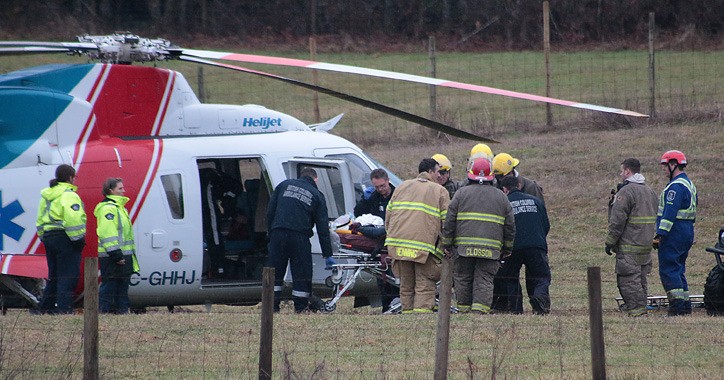B.C.’s patchwork system of helicopter rescue for people injured in remote areas leaves the province far behind the service available in Washington and Alaska, says a new report by B.C.’s Forest Safety Ombudsman.
Ombudsman Roger Harris looked at cases of forest workers injured in the woods, but expanded his findings to describe a “rural-urban divide” where people wait hours for transport to trauma centres, worsening their medical outcomes.
He cited the case of a faller working on Haida Gwaii, whose leg was crushed by a fallen tree in 2014. It took five hours to get him to the hospital in Queen Charlotte City, and another six hours to transfer him to Vancouver where his lower leg had to be amputated.
“And not only did his journey take a total of 11 hours, but it included two separate boat trips, a stint riding in a mechanic’s vehicle over an unserviced resource road, and an hour of waiting before being told that a helicopter was not being sent,” the report says.
Another worker waited more than 12 hours for rescue after being injured at a work site north of Prince George, in an incident being reviewed by WorkSafeBC.
Harris recommends the B.C. government guarantee timelines for all residents to reach a “Trauma 3 level” similar to Washington, where legislation guarantees that 99 per cent of the population has access within an hour.
Alaska, with similar geography to northern B.C. and a population of only 700,000 people, has 31 dedicated helicopters to reach people anywhere in the state within an hour, he said.
The report notes that emergency response in B.C. is shared among fire departments, the B.C. Ambulance Service (BCAS), search and rescue organizations and the RCMP, with volunteers and contractors involved in some services.
For job-related accidents, WorkSafeBC regulations require that employers have an emergency transportation plan for their employees, in remote areas. Linda Lupini, vice president of B.C. Emergency Health Services, said that includes logging, mining, fishing and ski resort operations.
“Our paramedics currently respond to patients only from a safe, clear area,” Lupini said in a statement responding to the report. “No matter the location, air ambulances and paramedics are dispatched according to the care needs of each patient, and the level of urgency required.”
Harris said rural areas need more resources.
“BCAS has concentrated its assets and full-time trained personnel within the larger urban centres where call volumes are high,” Harris wrote. “With fewer air assets in the north, BCAS rely mainly on a dedicated, volunteer, part-time workforce, predominantly utilizing a land-based ambulance response to respond to emergencies.”
